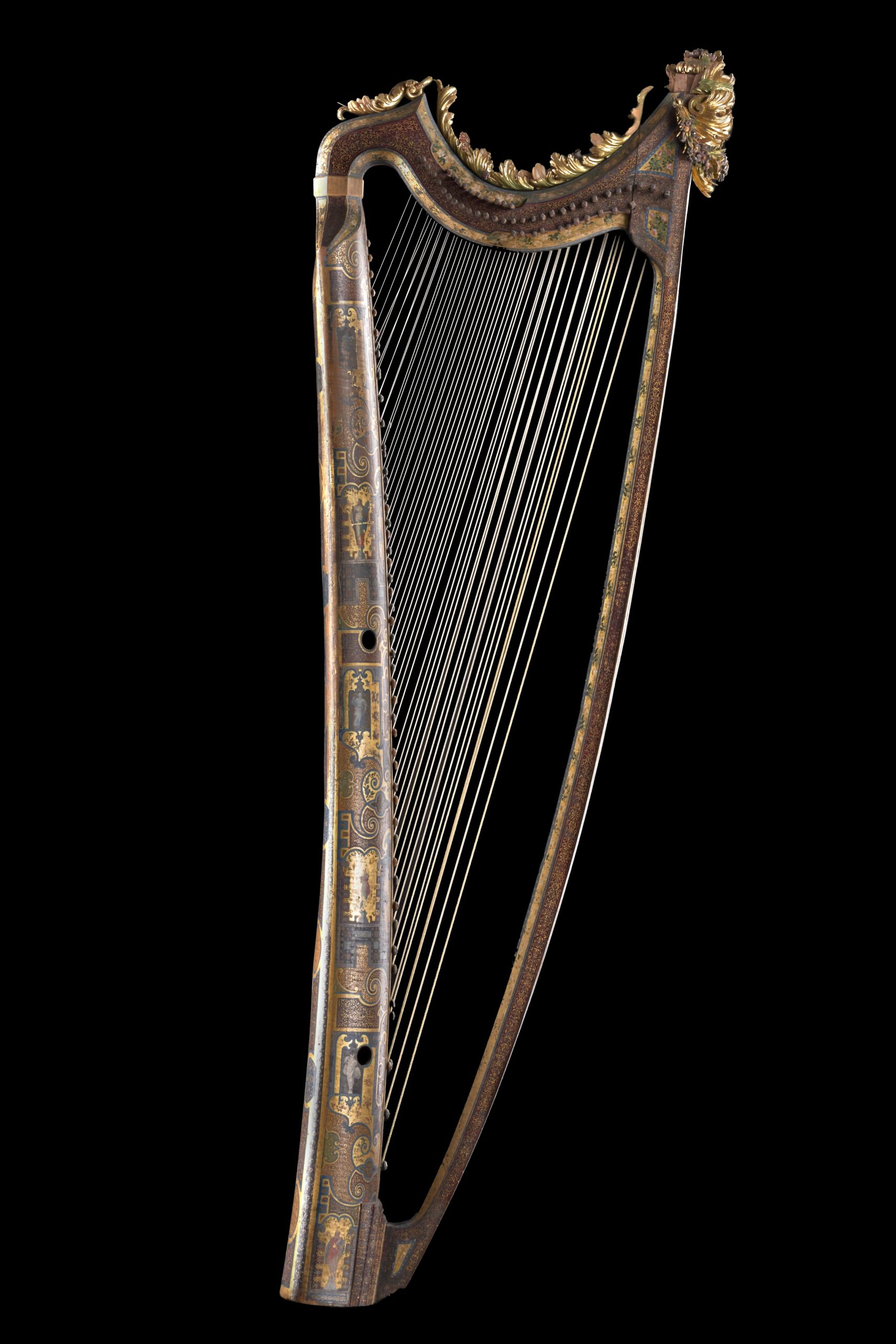The symbol of the passion for music in the court of Alfonso II is represented by the famous Estense Harp, commissioned by him for the ‘Concerto delle Dame Principalissime’ and destined for Laura Peperara (or Peverara), a singer and harpist from Mantua. The ‘Concerto delle Dame’ was instituted by the Duke for his wife Margherita Gonzaga, and was composed of three women musicians, already ladies-in-waiting to the Duchess, identified in addition to the aforementioned Laura Peperara, with Anna Guarini, singer and lutenist from Ferrara, daughter of Giovanni Battista Guarini, and Livia d’Arco, singer and viola player. This ensemble maintained the central role of the Estense Court in the sphere of music, confirming its function of prestige and fame.
The instrument was made in Rome starting in 1581, in a workshop in the circle of Giovanni Battista Giacometti. It is made of varnished maple and pear wood and consists of a double row of 49 strings. The harp is completely miniated and the decoration was carried out between 1587 and 1589 by Marescotti from Ferrara, the design of the upper friezes are by Giuseppe Mazzuoli known as Bastarolo, while the execution of the same is by the Flemish Orazio Lamberti, and it was finally gilded by Giovan Battista Rosselli.
The refined ‘damasquin’ decoration is alternated with mirrors on a gold and polychrome background containing allegorical figures and muses, as well as a rich floral and faunal pattern. Twelve figures between muses and allegories are depicted on the sound box, arranged in pairs on either side of the chords; two other figures indicated as “LABOR” and “DILIGENT.” conclude the decoration. The figures are identifiable through the inscriptions placed below them […] and “ARS” / “POLYHYMNIA” and “CLIO” / “HONOR” and “OPVLENTIA” / “HERATO” and “EVTERPE” / “TERMINE” and “QVIES” / […] and “THALIA”. The top of the harp is embellished with a gilded frieze with plant motifs and a polychrome crest with flowers and leaves.
The creation of this musical instrument combines the court’s refined taste in precious objects of the highest quality with the Dukes’ modernity in promoting the development of new art forms, in this case the trio of musicians composed exclusively of women, which was soon copied and proposed by other courts.
After the Devolution of Ferrara (1598) the harp arrived, fortunately intact, in Modena in 1601 where it can still be admired today in the Estense Galleries.







